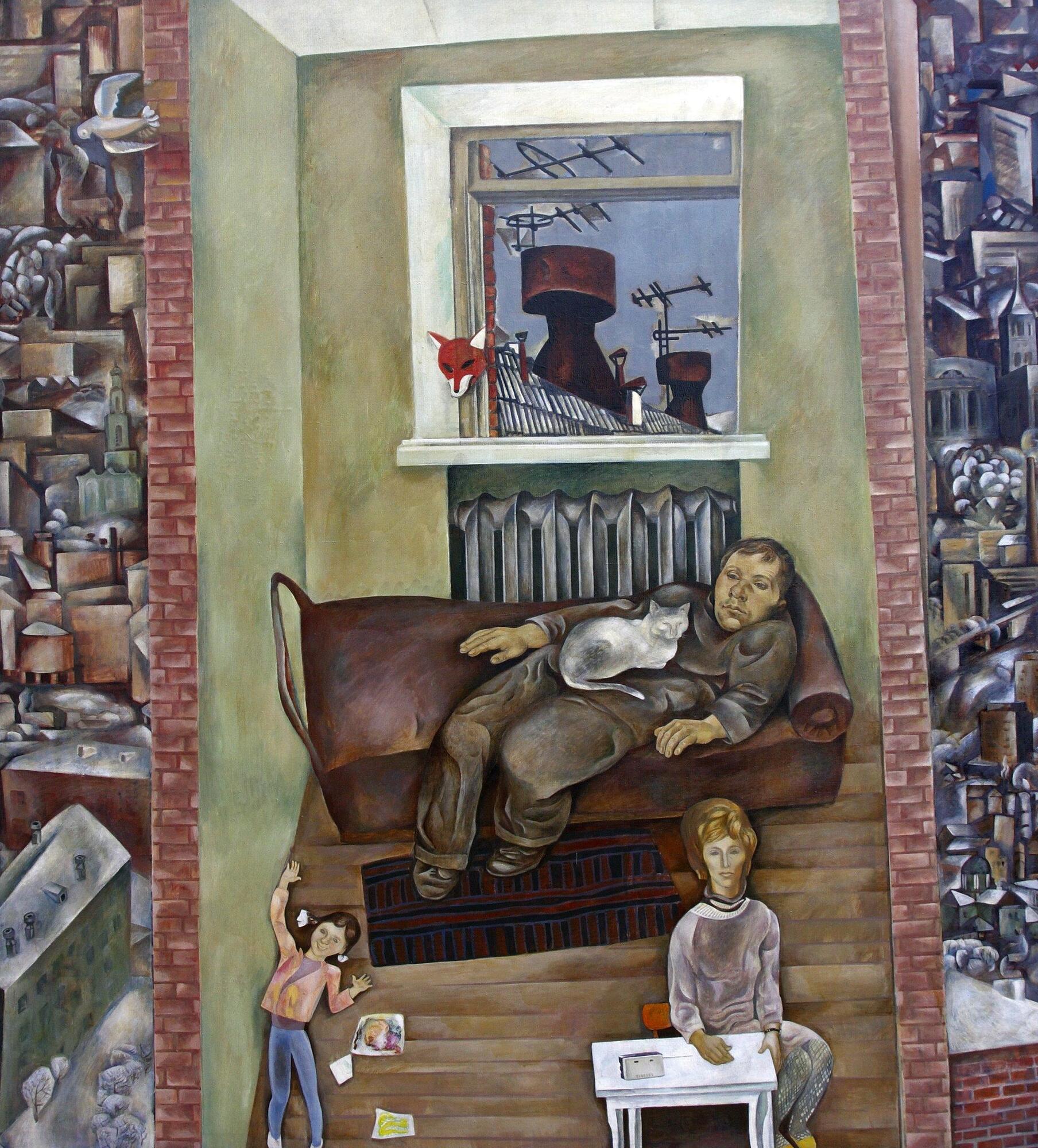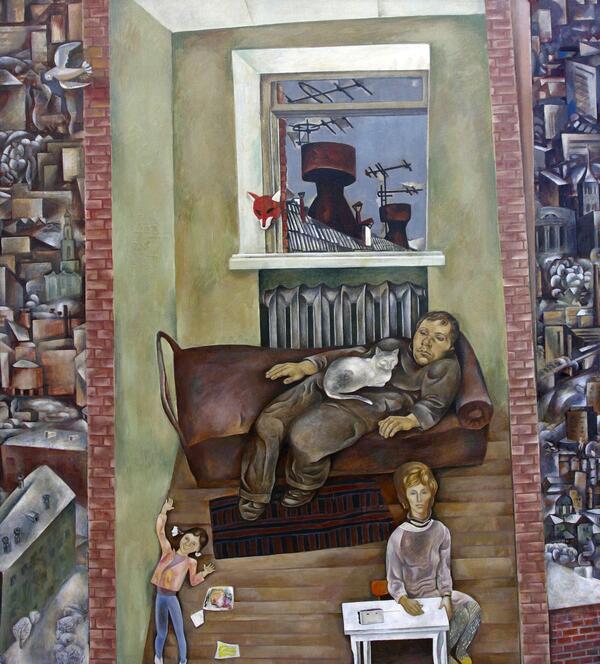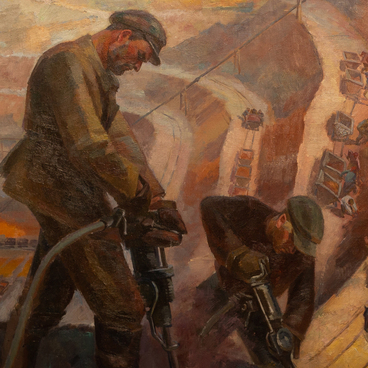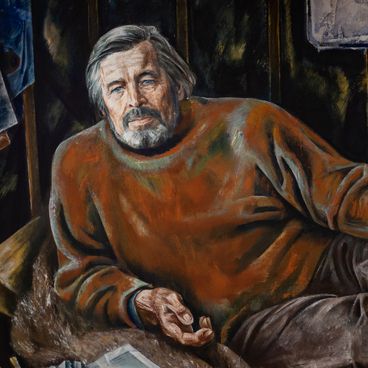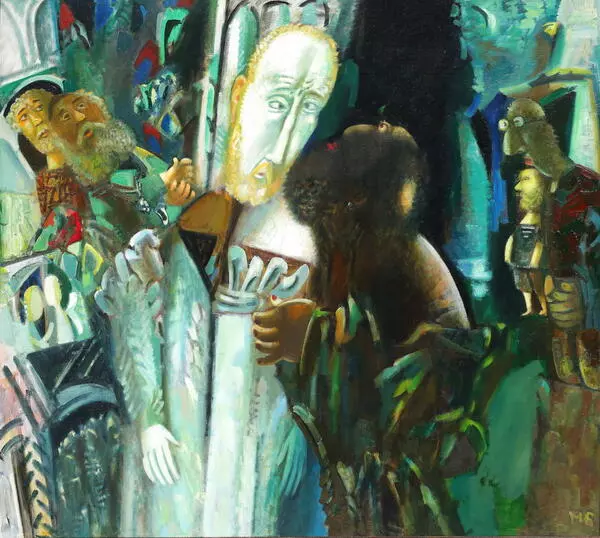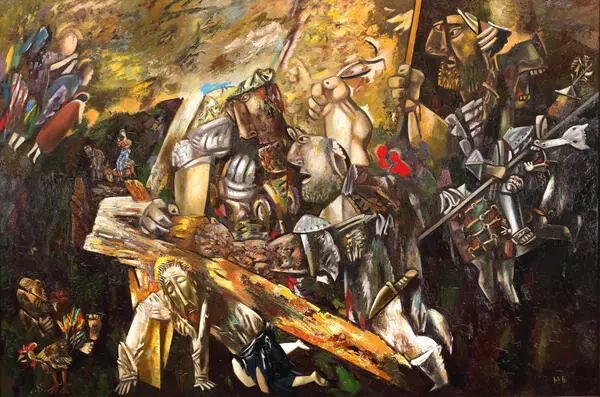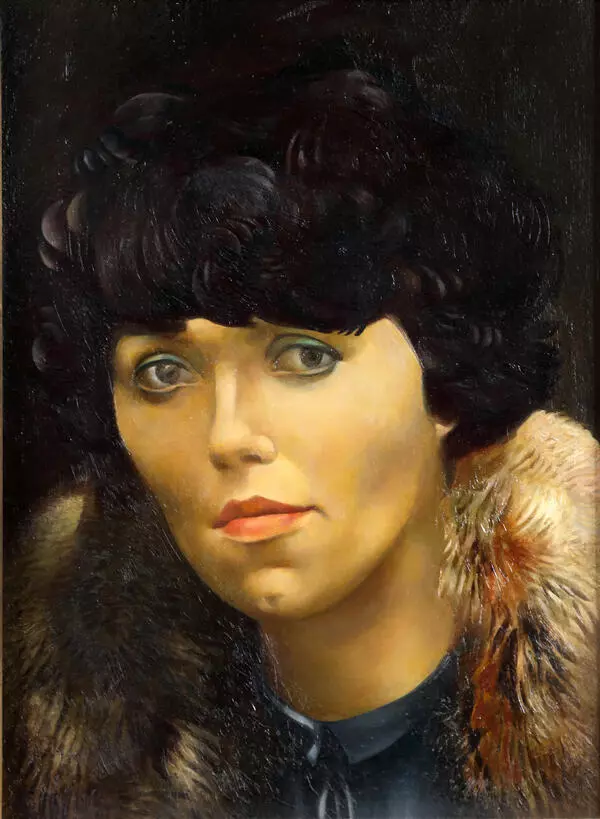The painting ‘In the Workshop’ was created by Misha Brusilovsky, a painter from the Ural region and one of the most prominent representatives of Soviet Nonconformist Art. He chose not to add the well-known elements of a traditional workshop to this painting, so there are no canvases, stretchers, or tubes of paint. The artist’s workshop is primarily shown as a cozy enclosed space, shielded by solid walls from the cold outside world.
This canvas is considered a certain starting point of the painter’s revolt against censorship. It is dated 1965, which is three years after the anniversary art exhibition at the Moscow Manege, where the Soviet leader Nikita Khrushchev chided avant-garde painters for their art. During his visit to the exhibition, he showered curses upon the artists, called their paintings dauby and ordered that such canvases be banned.
After that, the authorities launched a campaign against Formalism — the art movement that primarily focused on the shape of lines and qualities of color instead of including the elements with didactic and patriotic meaning to their works. After the Manege affair, the Russian newspapers began to persecute those painters whose art was viewed as ‘unprofessional’ or ‘incomprehensible’.
These events inevitably influenced the artistic scene of Sverdlovsk. The censorship was tightened, which naturally caused the rebellion of local painters. So, ‘In the Workshop’ shows Misha Brusilovsky not as an artist in a creative mood, but rather as a tired man deep in thought. The painter is depicted in a narrow brick cell, relaxing on a sofa with a white cat resting on his belly, and he simply observes his child’s joyous creative activities.
The format of the canvas is clearly experimental: Brusilovsky included figures of different sizes, heightened the outlines of objects, and painted the surroundings that look like hills interspersed with temples from the old Russian icons.
Even during the difficult 1960s, the artist remained true to himself. He was brave enough to go against Soviet propaganda and later experiment with his paintings, intertwining myths, Christian scenes, and the modern world. The combination of classic pictorial techniques and completely non-standard colors and lines was a common thing for his surreal canvases.
Eventually, Brusilovsky would be recognized both in Russia and far beyond it. The French press mentioned Brusilovsky’s name along with the names of such Russian artists as Ilya Kabakov and Eric Bulatov, and the guardian of the Prado Museum in Madrid called his art ‘one of the most outstanding phenomena of the 20th century Russia.’ Juan Fernandez Solero Jose Casaravilla wrote,
This canvas is considered a certain starting point of the painter’s revolt against censorship. It is dated 1965, which is three years after the anniversary art exhibition at the Moscow Manege, where the Soviet leader Nikita Khrushchev chided avant-garde painters for their art. During his visit to the exhibition, he showered curses upon the artists, called their paintings dauby and ordered that such canvases be banned.
After that, the authorities launched a campaign against Formalism — the art movement that primarily focused on the shape of lines and qualities of color instead of including the elements with didactic and patriotic meaning to their works. After the Manege affair, the Russian newspapers began to persecute those painters whose art was viewed as ‘unprofessional’ or ‘incomprehensible’.
These events inevitably influenced the artistic scene of Sverdlovsk. The censorship was tightened, which naturally caused the rebellion of local painters. So, ‘In the Workshop’ shows Misha Brusilovsky not as an artist in a creative mood, but rather as a tired man deep in thought. The painter is depicted in a narrow brick cell, relaxing on a sofa with a white cat resting on his belly, and he simply observes his child’s joyous creative activities.
The format of the canvas is clearly experimental: Brusilovsky included figures of different sizes, heightened the outlines of objects, and painted the surroundings that look like hills interspersed with temples from the old Russian icons.
Even during the difficult 1960s, the artist remained true to himself. He was brave enough to go against Soviet propaganda and later experiment with his paintings, intertwining myths, Christian scenes, and the modern world. The combination of classic pictorial techniques and completely non-standard colors and lines was a common thing for his surreal canvases.
Eventually, Brusilovsky would be recognized both in Russia and far beyond it. The French press mentioned Brusilovsky’s name along with the names of such Russian artists as Ilya Kabakov and Eric Bulatov, and the guardian of the Prado Museum in Madrid called his art ‘one of the most outstanding phenomena of the 20th century Russia.’ Juan Fernandez Solero Jose Casaravilla wrote,
